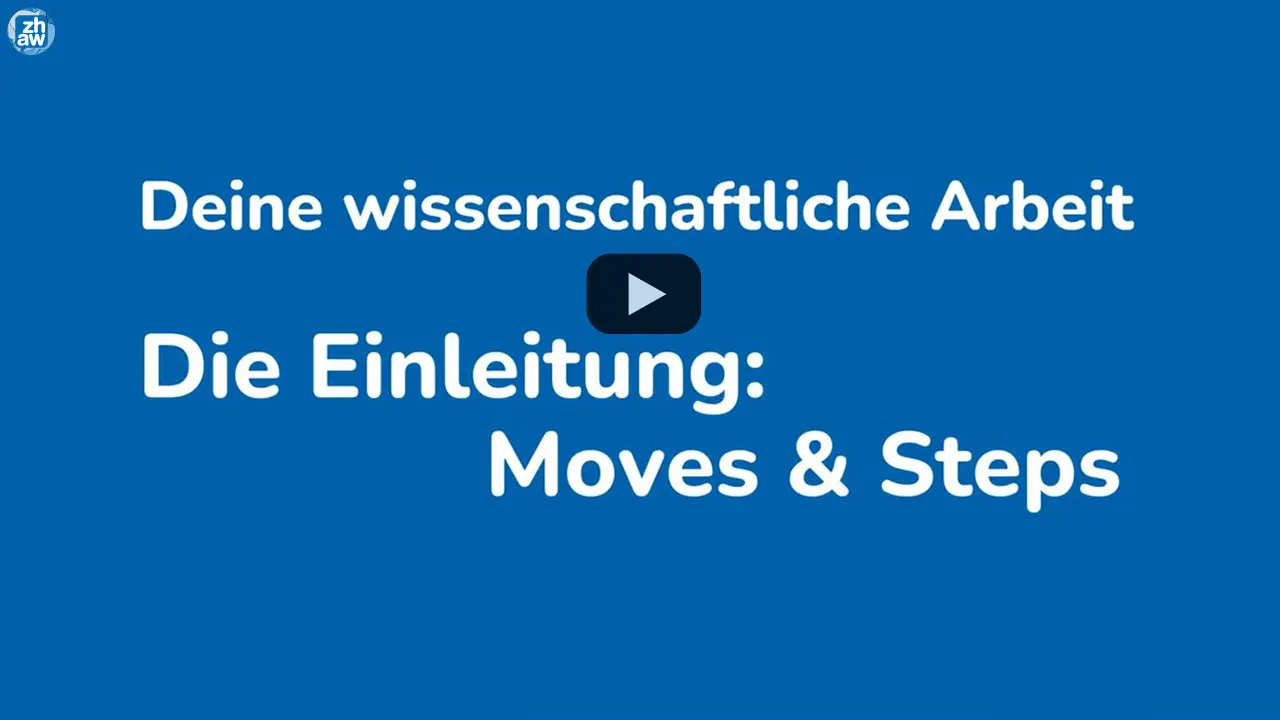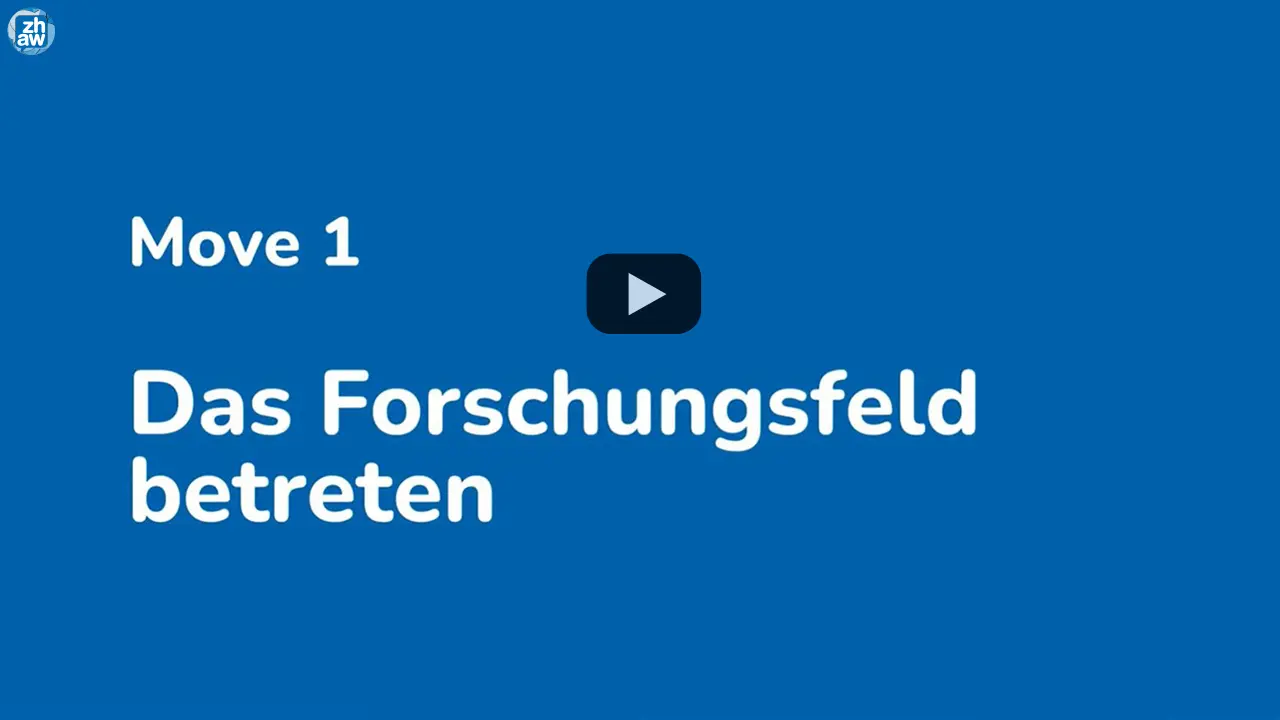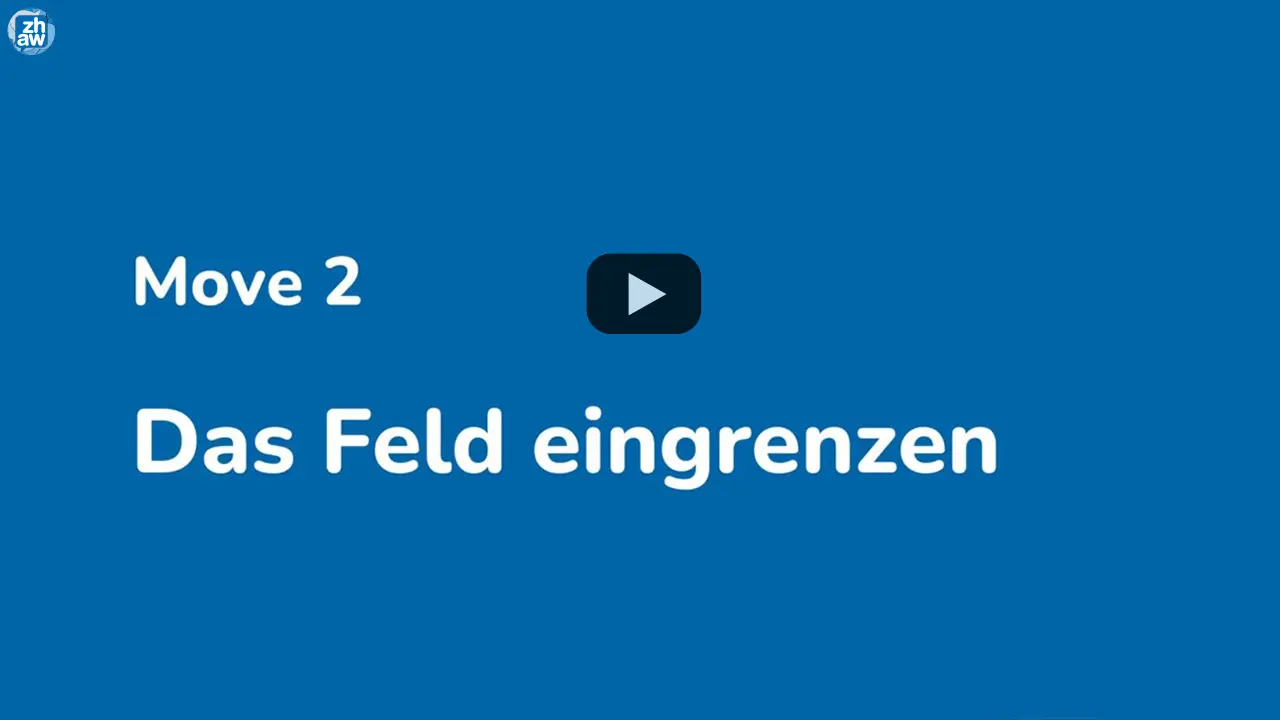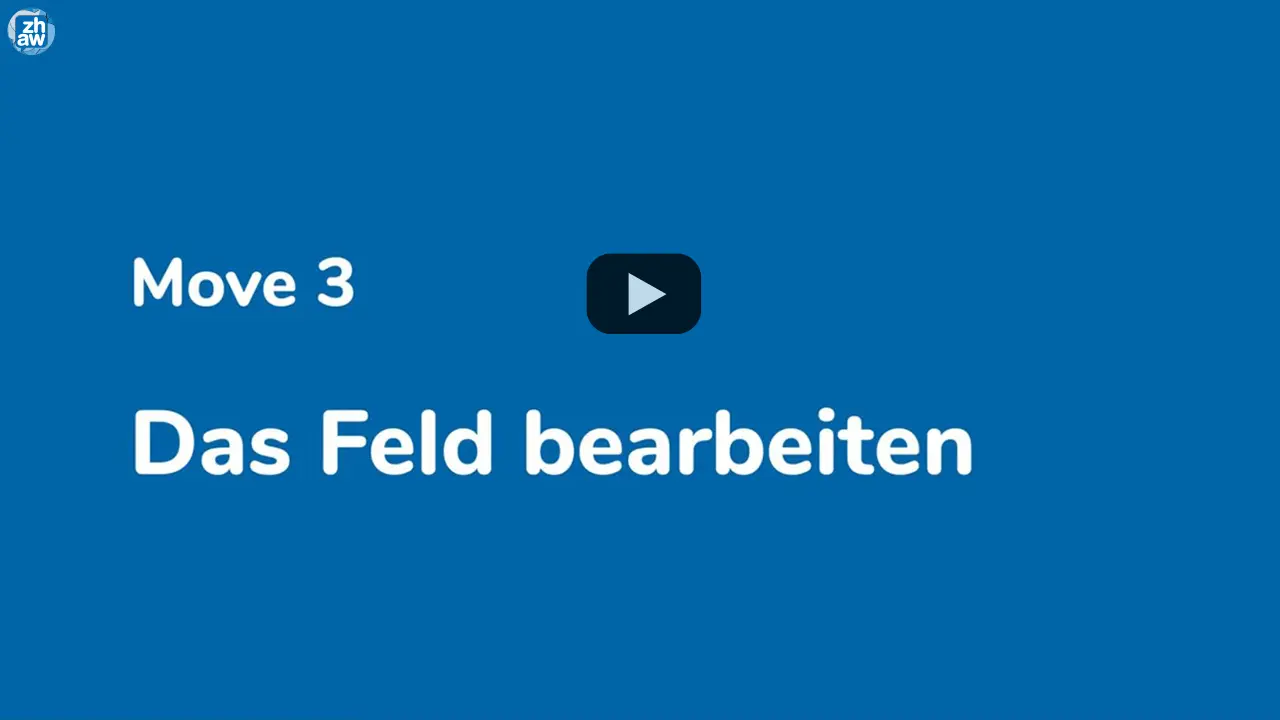Automatic text evaluation
AI-based tools can automatically evaluate academic texts and offer support in optimising texts.
Evaluation of introductions to academic texts
In terms of structure, an introduction represents a miniature version of an academic paper in its entirety. It performs key functions by orienting readers and reflecting the central contents of the paper.
The INTR‑O service provides automated feedback on the quality of introductions. INTR‑O is based on the well-known “Moves & Steps” model (Swales 1990), which supports writers in drafting their introductions and supervisors in providing writing advice.
- Go to INTR‑O
- INTR-O guide (PDF 92 kB) (in German)
Moves & Steps in academic paper introductions
The following videos and our model introduction (PDF 55 kB) (in German) demonstrate how to craft introductions using the “Moves & Steps” model.
Introduction to the “Moves & Steps” model
This video explains the key textual actions (the “moves”) that make up a successful introduction.

Move 1: introduction to the research field
In the first move, readers are introduced to the research field of the academic paper. This includes presenting the topic, its relevance and the current state of research.

Move 2: narrowing the focus
The second move provides more specific information about the paper's focus.

Move 3: presenting the research approach
In the third move, the paper’s approach is explained in more detail. This includes, in particular, formulating the central research question.

Model introduction
Our model introduction (in German) demonstrates how these moves and steps can be implemented effectively in a complete text. The arrangement and linking of the steps is illustrated here, deepening the understanding of the “Moves & Steps” model.
In INTR‑O, automated feedback on the quality of introductions can be obtained at different stages of the writing process.
References for the "Moves & Steps" model
- Swales, J. 1990. Genre Analysis. English in Academic and Research Settings. Cambridge University Press.
- Weder, M. 2015. “Fragen, zeigen, argumentieren? Metadiskursive Textroutinen zur Etablierung von Forschungspraktiken in wissenschaftlichen Einleitungen”. In Sprachgebrauch und Sprachbewusstsein, hrsg. v. Regula Schmidlin, Heike Behrens und Hans Bickel, 199–220. De Gruyter.
Other tools for text evaluation
There are a large number of tools available for automatic text evaluation. We have compiled a selection of these tools, tested them and provided them with a didactic commentary. This list is intended to help you in selecting the right tool. It is a prototype and neither claims to be complete nor up to date following the conclusion of the project.
The overall project
As part of the Digital Literacy in University Contexts project, we worked on AI-based technologies for the reception and production of texts in academic contexts. We offer students, teachers and writing consultants tutorials, services and good practices that support the reflective use of AI for text reception and production in academic contexts.
Automatic Text Evaluation project team
- Martin Businger
(ZHAW, ILC Institute of Language Competence) - Yves Furer
(PHZH, Writing Centre) - Curtis Gautschi
(ZHAW, ILC Institute of Language Competence) - Sooyeon Geckeler (Development INTR-O)
(ZHAW, ILC Institute of Language Competence) - Julia Hodson
(PHZH, Writing Centre) - Joachim Hoefele
(ZHAW, ILC Institute of Language Competence) - Liana Konstantinidou
(ZHAW, ILC Institute of Language Competence) - Otto Kruse
(ZHAW, ILC Institute of Language Competence) - Cerstin Mahlow
(ZHAW, ILC Institute of Language Competence) - Martina Meienberg
(PHZH, Writing Centre) - Jakob Ott
(ZHAW, Center for Innovative Teaching and Learning) - Maik Philipp (Co-Project Manager)
(PHZH, Writing Centre) - Christian Rapp
(ZHAW, Center for Innovative Teaching and Learning) - Alex Rickert (Co-Project Manager)
(PHZH, Writing Centre) - Maren Runte
(ZHAW, ILC Institute of Language Competence) - Margo Ulasik (Development INTR-O)
(ZHAW, ILC Institute of Language Competence)